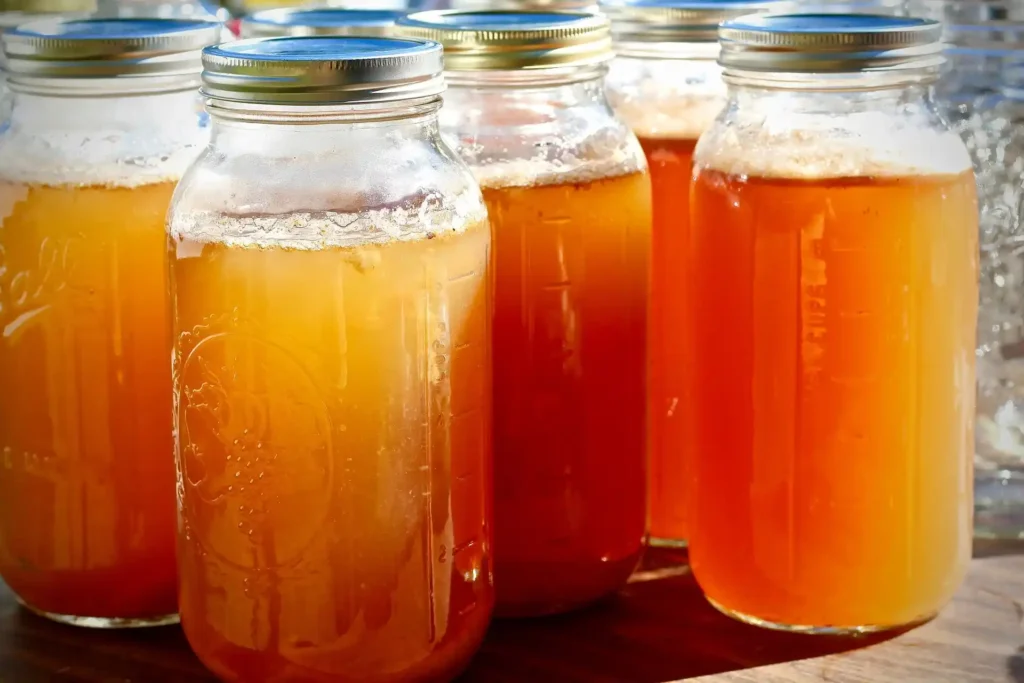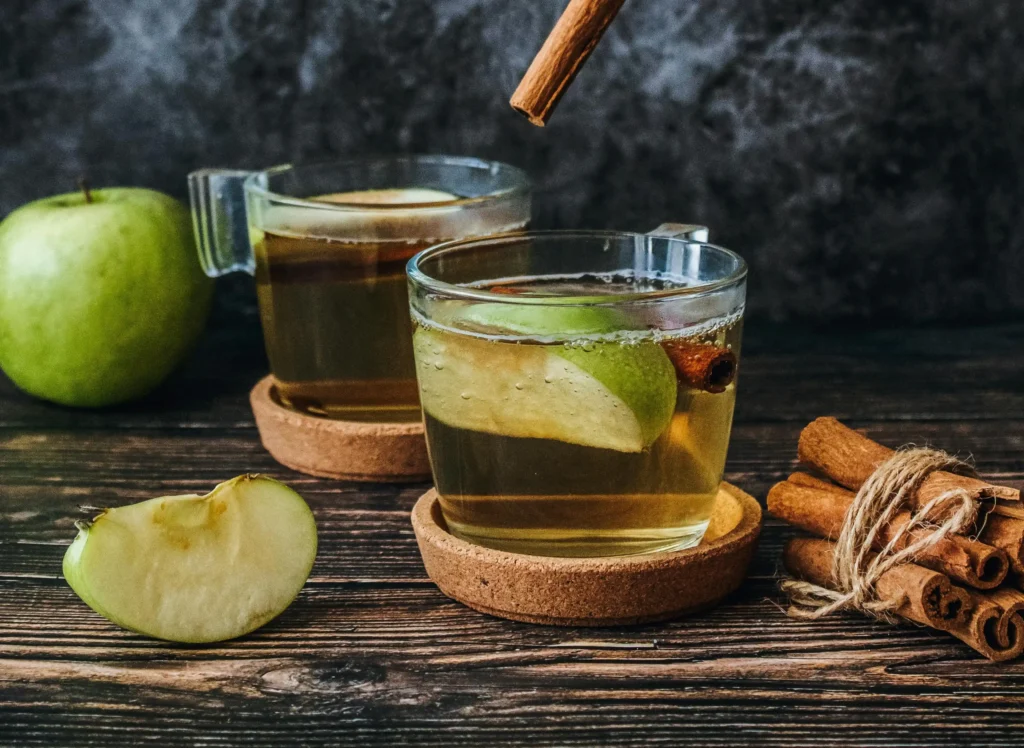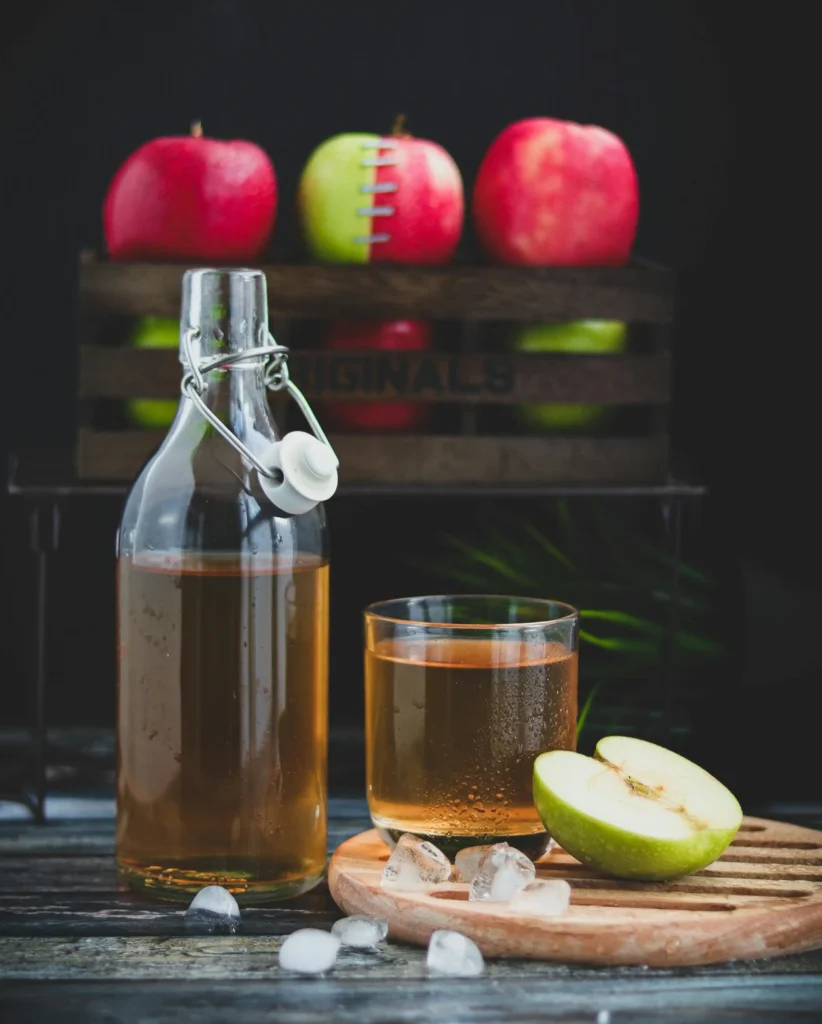This kitchen staple and new-age health tonic are versatile and impressively useful in a range of dishes and beyond. This is perhaps the best way of preparing apple cider vinegar at home since the process is very fulfilling and the vinegar prepared this way is additive-free and as strong as you want it to be. This descriptive guide will take you through a basic recipe to produce your apple cider vinegar at home, adding some zest to your kitchen.
What is Apple Cider Vinegar?

Apple cider vinegar is apple vinegar prepared from apple juice or purified water and apple pulp through the process of fermentation. In the first step in the fermentation process, apple juice turns into alcohol then through an acetic acid turns into vinegar with a sour taste and a very strong smell. This is widely used as a salad dressing, and as a marinade and contains medicinal values. Apple cider vinegar has recently come to the limelight due to some of the benefits it has which include; helping in the digestion of food, reducing blood sugar levels, and also helping in skin health.
Why Make Your Apple Cider Vinegar?

Home production of apple cider is not only cheap but also ensures the kind of vinegar produced is of your choice in terms of ingredients used and the fermentation process. Commercial apple cider vinegar may be processed and can contain additives such as formaldehyde and proc Synthetic colors and flavours may also be added to the vinegar. In this way, you get a more natural product with less or no interference from any other chemicals that may be present in commercially produced apple cider vinegar. In addition, homemade is generally considered to have a deeper and much richer flavor, which adds value to its culinary application.
Benefits of Homemade Apple Cider Vinegar

Chemically synthesized apple cider is much more expensive compared to homemade apple cider vinegar, which also has some advantages. It is a raw apple that preserves different soluble solids and desirable phytochemicals recognized to exist in apples. It can be improved by the fermentation process which in turn increases the probiotic benefits to the digestive system. Further, when you use the apple cider vinegar option sourced from your grocery store, you are certain not to ingest other ingredients other than the ones in this listing because manufacturers do not add preservatives and other ingredients to your apple cider vinegar.
Try More Recipe:- Refreshing Mint Lemonade Recipe: Easy and Perfect for Summer
How to Make Apple Cider Vinegar at Home: Easy Recipe and Tips
Description
ACV as it is also referred to is a common vinegar type that has been used in several health capacities as well as in cooking. This is derived from fermented apples and can be applied to salads, dips, and meats, or it can be a remedy. Below, you will find the procedure on how to prepare apple cider vinegar by yourself.
Ingredients
Optional Ingredients:
Instructions
-
Prepare the Apple Juice:
Pour 4 cups of apple juice into a clean, large glass or plastic container. Ensure the container is free from any residues.
-
Add Sugar (Optional):
If you prefer a slightly sweeter apple cider vinegar, dissolve 1 tablespoon of sugar in a small amount of apple juice and add it to the container.
-
Add Apple Cider Vinegar:
Add 1 cup of apple cider vinegar to the apple juice. If you’re using a store-bought apple cider vinegar, you may need to dilute it with 1/4 cup of water. This step is optional but can help if the vinegar is too strong.
-
Cover the Container:
Cover the container with a clean cloth or coffee filter secured with a rubber band. This allows air to flow while keeping out dust and insects.
-
Fermentation Process:
Place the container in a warm, dark place (around 60-80°F or 15-27°C) for 3-4 weeks. Check periodically to ensure no mold is forming. Stir the mixture gently every few days.
-
Taste Test:
After 3 weeks, taste the vinegar. If it’s not acidic enough for your preference, let it ferment for another week or two.
-
Strain and Store:
Once the apple cider vinegar has reached the desired acidity, strain out any solids and transfer the liquid to a clean glass bottle or jar with a tight-sealing lid.
-
Use and Enjoy:
Store the homemade apple cider vinegar in a cool, dark place. It can be used in various recipes or as a health tonic.
Servings 3
- Amount Per Serving
- Calories 5kcal
- % Daily Value *
- Total Fat 0.1g1%
- Saturated Fat 1g5%
- Cholesterol 1mg1%
- Sodium 1mg1%
- Potassium 1mg1%
- Protein 1g2%
- Vitamin A 2 IU
- Vitamin C 3 mg
- Calcium 1 mg
- Iron 0.1 mg
* Percent Daily Values are based on a 2,000 calorie diet. Your daily value may be higher or lower depending on your calorie needs.
Note
- Use organic apple juice if possible for the best results.
- Make sure to use a clean, non-metallic container to avoid contamination.
- Preparation Time: 10 minutes
- Fermentation Time: 3-4 weeks (may vary depending on conditions and taste preferences)
- Total Time: Approximately 3-4 weeks




